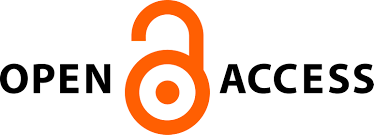SLED RESISTED SPRINT TRAINING - A REVIEW OF THE LITERATURE
##plugins.themes.bootstrap3.article.main##
Abstract
Background: Sled-resisted sprint training (RST) has emerged as a common intervention strategy for enhancing sprint performance, yet the optimal implementation strategies and expected outcomes remain debated in the literature.
Objective: To systematically review and evaluate the effectiveness of sled-based training interventions on sprint performance across different populations and loading protocols. Methods: Twenty-one studies involving athletic and active populations were analyzed for training effects on sprint performance, focusing on acceleration and maximal velocity phases. Studies examining various sled loads and comparing RST with unresisted sprint training (UST) were included.
Results: Heavier sled loads (20-30% of body mass) demonstrated greater effectiveness in improving early acceleration ability, while lighter loads (5-12.5% body mass) were more beneficial for maximal velocity development. Combined RST and UST programs produced superior results compared to UST alone (-2.43 ± 0.67% vs -1.15 ± 0.72% improvement over 30m). RST showed stronger evidence supporting acceleration development rather than maximal velocity training. Phase-specific improvements were observed, with distinct outcomes in acceleration versus maximal velocity phases.
Conclusions: RST is an effective targeted intervention, particularly beneficial for athletes in sports requiring explosive acceleration over short distances (10-20m). Training protocols should be tailored to specific objectives, with load selection based on whether acceleration or maximal velocity enhancement is the primary goal. While both RST and UST demonstrate performance benefits, practitioners should align training modality and load with specific performance goals and athletic requirements.
##plugins.themes.bootstrap3.article.details##
Authors retain copyright and grant the journal right of first publication and allow others to share the work with an acknowledgement of the work's authorship and initial publication in this journal.
Authors are able to enter into separate, additional contractual arrangements for the non-exclusive distribution of the journal's published version of the work (e.g., post it to an institutional repository or publish it in a book), with an acknowledgement of its initial publication in this journal.
This journal provides immediate open access to its content on the principle that making research freely available to the public supports a greater global exchange of knowledge.



